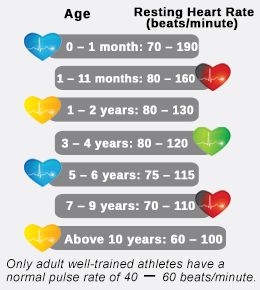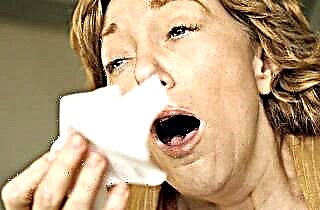The nose is a complex and very fragile system. Quite often, for one reason or another, the sinuses of the nose hurt. In addition, purulent discharge appears, breathing becomes difficult due to nasal congestion. Therefore, at the first painful sensations, it is necessary to seek professional help as soon as possible.
Why do pains appear
 There can be many reasons for sinus pain. The inside of the nose is lined with a thin mucous membrane. It consists of microscopic cilia that work in tandem with the mucous glands. Such a duo performs a protective function - it does not allow dust particles and pathogenic viruses to pass through.
There can be many reasons for sinus pain. The inside of the nose is lined with a thin mucous membrane. It consists of microscopic cilia that work in tandem with the mucous glands. Such a duo performs a protective function - it does not allow dust particles and pathogenic viruses to pass through.
But not in all cases the nasal mucosa copes with the functions assigned to it. With a deficiency of vitamins and weak immunity, pathogenic bacteria gradually enter the body and create foci of infection. All this increases the risk of serious nasal diseases like an avalanche.
According to medical statistics, today there is an increase in the number of patients who have diseases of the nose and paranasal sinuses. Doctors cannot yet find clear reasons for this negative trend. One of the factors is poor ecology; experts also note the strong influence of seasonal colds.
In the summer, pain in the paranasal sinuses is provoked by sea or river water that has got into them. There are a lot of assumptions, but all of them are still poorly systematized. As for the symptomatology, everything is more or less clear here.
Symptoms and manifestations of the disease
Diseases of the nose and paranasal sinuses are accompanied by a number of symptoms. Pain sensations are localized directly in the nose and adjacent areas - this can be the bridge of the nose, the sensitive area above the eye, and so on. The pain gets worse over time. Its characteristic feature is that it is not pronounced in the morning and reaches its climax in the evening. Later, the pain loses its exact location, and then the whole head begins to ache.
 A concomitant symptom of sinus ailments is a violation of nasal breathing and nasal congestion. Hoarseness of the voice is often observed. In this case, in most cases, both nostrils are blocked with short periods of relief (although only one side can be edematous). The pains are accompanied by a severe runny nose, secretion of clear mucus, or purulent snot of yellow or green color. But this symptom does not always appear: if the outflow of mucus from the sinuses is disturbed, there may not be a runny nose.
A concomitant symptom of sinus ailments is a violation of nasal breathing and nasal congestion. Hoarseness of the voice is often observed. In this case, in most cases, both nostrils are blocked with short periods of relief (although only one side can be edematous). The pains are accompanied by a severe runny nose, secretion of clear mucus, or purulent snot of yellow or green color. But this symptom does not always appear: if the outflow of mucus from the sinuses is disturbed, there may not be a runny nose.
In some cases, doctors diagnose an increase in the patient's temperature up to 38 degrees. As a rule, this occurs with an acute form of sinusitis.
Chronic forms of such a disease are not accompanied by high fever. General malaise is pronounced, weakness appears, sleep is disturbed, appetite disappears. Occasionally, patients are worried about severe attacks of sneezing and sore throat.
Diseases of the paranasal sinuses
Unpleasant sensations in the nose can be caused by a number of ailments. Quite often, patients have sinusitis - inflammatory processes in the paranasal sinuses. They are accompanied by fever, severe headaches, and nasal congestion. In some cases, general symptoms are complemented by toothache and swelling of the skin on the face. The most common diseases are:
- Inflammatory processes inside the sinuses (sinusitis). In addition to severe nasal congestion, the patient complains of intense headaches, impaired sense of smell and febrile temperature (38 to 39 degrees). Especially often sinusitis is diagnosed in the autumn-winter period, when epidemics of influenza and SARS are raging. Sinusitis can be caused by infectious pathogens, mechanical trauma, polyps, malfunctioning of the immune system, and so on.

- In addition, pain can occur due to ethmoiditis, an inflammation that affects the cavity of the ethmoid sinus. This is a dangerous disease that is fraught with multiple complications due to the proximity of the ethmoid sinus to the orbit and artery. Symptoms of ethmoiditis are represented by intense nasal pain, fever, redness of the eyes and decreased visual acuity. As for nasal discharge, they are usually absent. The key reason for this ailment is viral infections.
- Diseases of the paranasal sinuses are also represented by frontal sinusitis, a disease in which the mucous membrane of the frontal sinus is affected. In this case, there is a strong irrepressible pain in the area above the eyebrows, the body temperature rises, and general weakness is observed. The main cause of frontal sinusitis is an infection of fungal, viral or bacterial origin.
- With sphenoiditis, the sphenoid sinus mucosa becomes inflamed. Unlike the diseases described above, sphenoiditis is diagnosed less often. It often occurs in a chronic form and is practically not amenable to drug treatment.
- Also, sinuses can be sore due to rhinitis. The cause of a runny nose can be viruses, microbes, or allergic reactions of the body to irritants (pollen, intolerable food, animal hair, dust, and so on). Often, rhinitis precedes the appearance of adenoids. In any case, it must be treated, otherwise the runny nose will transform into a chronic form.
Other ailments-causes
A common cause of pain is also polyps - abnormal growths on the nasal mucosa. As a rule, their appearance is caused by chronic inflammation. There is an overlap of the nasal passages, so breathing through the nose is impaired. The characteristic symptoms of such an ailment are as follows:
- nasal voice;
- nasal congestion;
- inflammation of the nasopharynx;
- loss of hearing and sense of smell.
 In most cases, polyps are surgically removed. But at the very beginning of the disease, you can get rid of them by taking anti-inflammatory as well as antihistamines.
In most cases, polyps are surgically removed. But at the very beginning of the disease, you can get rid of them by taking anti-inflammatory as well as antihistamines.
Pain syndrome often accompanies scleroma. It is a chronic infectious disease that affects the mucous membrane of the respiratory tract. The scleroma may not appear in any way for several years, but later the hypertrophy of the sinuses begins. The airways are narrowed, resulting in poor breathing.
The main manifestations of scleroma:
- labored breathing;
- permanent drowsiness;
- nasal congestion;
- recurrent headaches;
- general weakness and loss of strength.
Congenital nasal pathologies are quite common. For example, a person's nasal septum may be slightly curved, which, however, does not cause him any discomfort. However, more severe deformities prevent the nose from working properly. To correct the situation, the method of surgical intervention is used.
Mechanical injuries of the nose - open, closed, combined - also cause severe pain. They can be accompanied by displacement of bone fragments, deformation of the external nasal regions. Even without compromising bone integrity, mechanical trauma causes swelling and hematoma of the nasal septum.
Therapy
To successfully treat infectious diseases of the paranasal sinuses, it is necessary to localize the inflammatory focus and determine its type (inflammation can be purulent or catarrhal). For this, diagnostic hardware methods are widely used. Computed tomography makes it possible to identify the site of inflammation, to determine the type of discharge and their amount. X-ray examination (usually performed in two projections) will also help to make a diagnosis. Only on the basis of the data obtained is the doctor able to determine the optimal strategy for getting rid of pain.
 In the course of treatment, painful sensations are eliminated. The key cause of the pathology is affected, washing (drainage) of the sinuses is performed.
In the course of treatment, painful sensations are eliminated. The key cause of the pathology is affected, washing (drainage) of the sinuses is performed.
The first priority is to deal with the swelling. A similar symptom is observed in most nasal diseases. Edema interferes with the normal air circulation in the body. Puffiness is eliminated through the use of medications for vasoconstriction. Today Naftizin, Sanorin, Galazolin and other medicines are actively used.
To relieve pain, it is necessary to flush the paranasal sinuses. This procedure helps to liquefy the mucus and then remove it from the nose. As a result, the outflow of exudate is activated, and the inflammatory process gradually fades away.
This is followed by warming procedures (they are especially relevant at the initial stage of the development of the disease). For this, the attending physician prescribes electrophoresis or UHF. At home, heating can be done with dry heated sand or salt, an ultraviolet lamp.
Also, an effective remedy is the application of heated essential oils to the areas of the frontal and maxillary sinuses. Warming up reduces swelling, but should be used taking into account the nature of the inflammation and only with the permission of the doctor.
In some cases, antibiotics are introduced into the course of treatment. Such therapy is justified if:
- warming up and the use of drugs for vasoconstriction turned out to be ineffective;
- the disease is complicated by high fever.
Preventive actions
Unfortunately, you cannot completely insure yourself against diseases of the nose and paranasal sinuses. However, some measures will help reduce the risk of their occurrence:
- Doctors advise avoiding excessive hypothermia if possible. Remember, colds are not caused by the cold. Low temperatures constrict the nasal blood vessels. And this makes the mucous membrane more vulnerable to pathogenic bacteria.
 Rinse your nose daily during the fall-winter period (during the flu and cold epidemics). Allergy sufferers are advised to regularly rinse their nose in the spring when the plants begin to bloom. Rinsing can be done with normal saline solution: it is effective against viruses and allergens.
Rinse your nose daily during the fall-winter period (during the flu and cold epidemics). Allergy sufferers are advised to regularly rinse their nose in the spring when the plants begin to bloom. Rinsing can be done with normal saline solution: it is effective against viruses and allergens.- Remember to eat right. It is not necessary to strive for a refined diet. But it should have enough cereals, meat, fish, fruits and vegetables. Do not eat semi-finished products - this is "dead" food, which does not contain any useful elements.
- Work to strengthen your immune system. The best option is hardening. Take contrast showers every day. This will help restore the body's defenses and improve the functioning of the immune system.
We recommend not to self-treat diseases of the nose and paranasal sinuses. The symptoms of such ailments are very similar, so it is almost impossible to accurately determine the diagnosis at home.
At the first manifestations of inflammation of the nasal mucosa and other symptoms, consult a doctor. Only he is able to accurately name the cause of pain and prescribe adequate therapy.

 Rinse your nose daily during the fall-winter period (during the flu and cold epidemics). Allergy sufferers are advised to regularly rinse their nose in the spring when the plants begin to bloom. Rinsing can be done with normal saline solution: it is effective against viruses and allergens.
Rinse your nose daily during the fall-winter period (during the flu and cold epidemics). Allergy sufferers are advised to regularly rinse their nose in the spring when the plants begin to bloom. Rinsing can be done with normal saline solution: it is effective against viruses and allergens.

